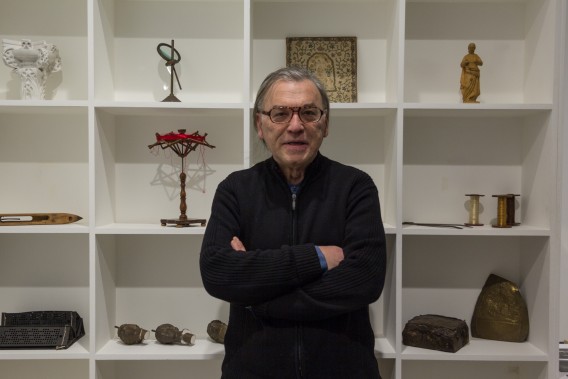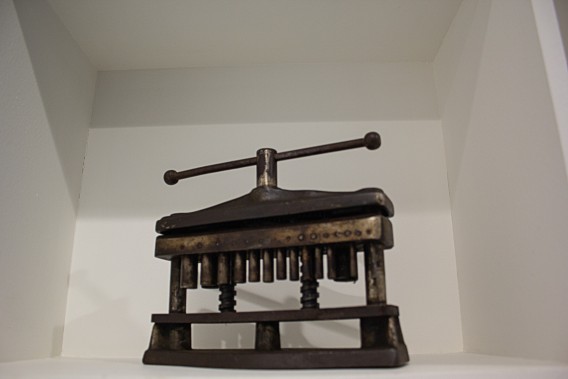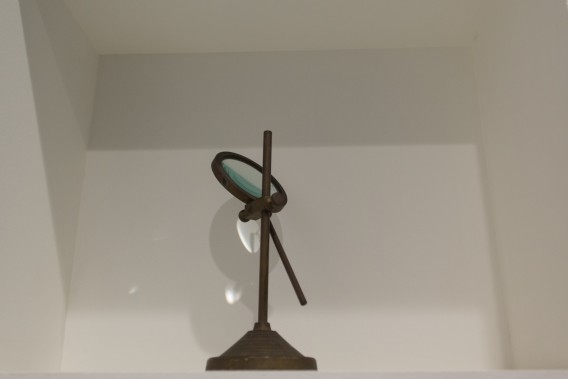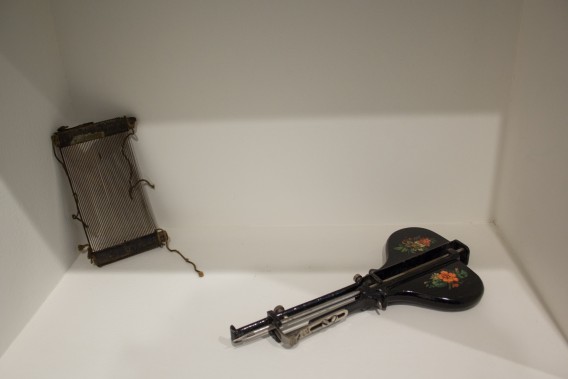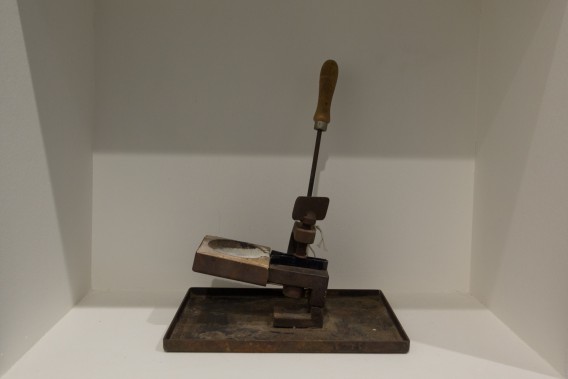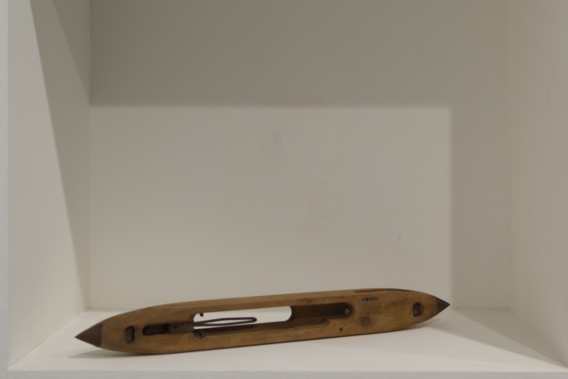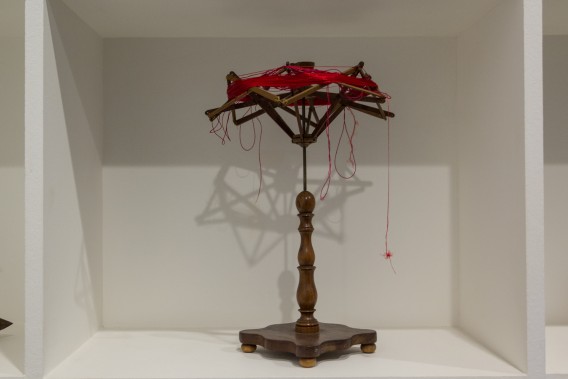With the exhibition “Suspended Places. Revitalizing Urban Identities”, an exhibition organized by LABi (Laboratory of thought, creation and diffusion of the image), integrated by a group of students of the Master in Photography, Art and Technique of the Polytechnic University of Valencia, in collaboration with La Posta Foundation, we have the opportunity to see a series of pieces from the March House-workshop in Mare Vella street; along with works by Pau Figueres and Pepa L. Poquet, in a dialogue that comes to focus attention on the impacts and transformations suffered by the city, little attentive to the life forms that inhabit it; because the March workshop suffers the threat of the pickaxe, for the sake of the progress of the city (the opening of a square at that point is intended, in order to be able to contemplate the remains of the Islamic wall of the city).
The March workshop has always been a place of artistic work, dedicated to silk, sculpture or imagery, metalwork and enamels on metal and ceramics. The pieces on display brought from the March workshop, some are finished works, but there is an abundance of work tools, which remind us of the process of making these works, and, what is more important, they bring to mind the concept of workshop as understood in the past, associated with the learning process. Because the March workshop has always been a workshop-school. This is a facet that has not been highlighted enough, in the context of some chronicles that tend to emphasize its status as a pre-industrial workshop, which took advantage of the special conditions offered by the territory in which it is located, a plot on Mare Vella street characterized by the presence of two important ditches in its vicinity that provided the driving force and other resources necessary for productive activities.
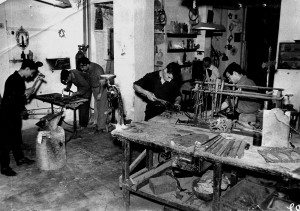
The training vocation that hosts the March workshop has always been closely linked to that area of the Valencian neighborhood of Carmen. The March workshop was the site of “The Artisan of San José” learning school, and on that same plot, before, in the 15th century, there were the Valldigna Schools. Rafael Solaz tells it in El Carmen. Social and urban chronicle of a historic neighborhood.
This formative task, which has been traditionally developed in that place, is not alien to the place itself. In this place productive activities have been developing with a strong social implication since time immemorial, and that has left a sediment in the space that is difficult or impossible to reproduce. In this sense, those who think that the value of the site is the activity that has been developing and that this could be moved to another place, although close, to proceed with the demolition of the building for the opening of a square and urban transformation are wrong. About the influence of the place that receives the activities in the development of these, we know enough in La Posta Foundation, that we have reflected on previous experiences, such as the Solar Corona or La Calderería, in which, with the loss of the place, we have lost the accumulated experience for the community. It is true that the March workshop, because of its physical disposition in relation to the public space, is little interrelated with the community. Their physical disposition towards the outside almost goes unnoticed. But these issues can be corrected. But his disappearance would be an irreparable loss.
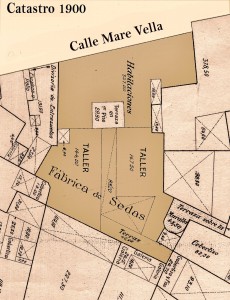
La Posta Foundation feels in the pedagogical tradition of the area to which we are referring, particularly applied to the field of arts conceived as a work, such as the one magnificently represented by the March workshop. In this sense, we embrace the idea of the workers’artist, that of the workshops and studies in which the apprentices were taught, in a then guild context that now has to necessarily give rise to new forms of grouping and community. Curiously, there is usually not much talk about this issue ―the one that refers to the way in which the artist’s work is organized collectively―. That is why the thesis of Diego Vadillo López has drawn our attention. The contemporary plastic artist as an accidental artist-worker (Complutense University of Madrid, 2016). Although he refers to a very concrete artist-worker, because he refers to architectural construction works, the truth is that he also refers to a classic in relation to this question, as is the case of Brancusi, particularly involved in material processes and manuals (and also, and this is very striking, in the documentation processes of their own work, including the capture and registration of the links that were established in their place of work). In relation to this, we would be, within the conceptual that we practice, by a thought that is done with the hands (Sonia Martinez). A good example of what we are saying would be constituted by the case that Andrés Duque had already talked about narrating his adventure of knowledge with Oleg Karavaichuk, on the occasion of the making of the film “Oleg and the rare arts” (2016). He says in the interview in which he comments on this experience, made on the occasion of the exhibition of the film at the Punto de Vista festival: “what interested me the most was his creative process, that is, those little rituals that he has to compose music, which are often as strange as letting their hands go through the marbles of the Hermitage, feeling the vibration of the marbles, and then extracting music and then transferring it to the piano”. Thinking with the hands.
“Those who work with their hands have forgotten that they had a head, those who work with their heads, in general, go through the pain of believing themselves to be diminished when they have to work with their hands”
Antonin Artaud

